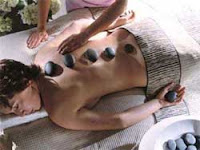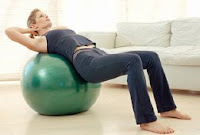Physiotherapy. 2009 Mar; 95(1): 8-14von Garnier K, Köveker K, Rackwitz B, Kober U, Wilke S, Ewert T, Stucki GBACKGROUND: There are indications that segmental stabilising exercises (SSEs) are effective in the treatment of low back pain. The evaluation of successful training in SSE performance in patients requires a reliable outcome measure. The PRONE test gives an indication of the activity of the transversus abdominis muscle. Performed in prone lying using a pressure biofeedback unit, it has been used as an aid to training and to assess the subject's ability to perform SSEs correctly. OBJECTIVES: To evaluate inter-observer and test-retest reliability of the PRONE test. DESIGN: Repeated measures by three observers on 2 days. SETTING: Department of Physical Medicine and Rehabilitation, Ludwig-Maximilian University, Munich, Germany. PARTICIPANTS: Forty nurses (39 females and one male), aged between 24 and 62 years, with at least one episode of low back pain. MAIN OUTCOME MEASURES: During the test, movement of the abdominal wall was monitored by measuring a change in pressure during muscle contraction termed 'abdominal hollowing'. Defined observation and palpation criteria were verified by the observers to ensure correct execution of the test. METHODS: Participants were tested on two separate days. On the first day, Observer A performed two similar test sets, each with four exercises. On the second test day, Observers B and C conducted one test set each. RESULTS: This study found an intra-class correlation coefficient (ICC) of 0.47 [95% confidence interval (CI) 0.20 to 0.67] for inter-observer reliability, and an ICC of 0.81 (95% CI 0.67 to 0.90) for test-retest reliability. Kappa values and the limits of agreement were also calculated with similar results. CONCLUSIONS: For this subject group, the PRONE test had relatively low inter-observer reliability but, as may be expected, higher test-retest reliability. It is suggested that by providing visual feedback, the PRONE test may enhance patients' insight into their deep abdominal muscle recruitment and thereby increase their motivation to exercise.



